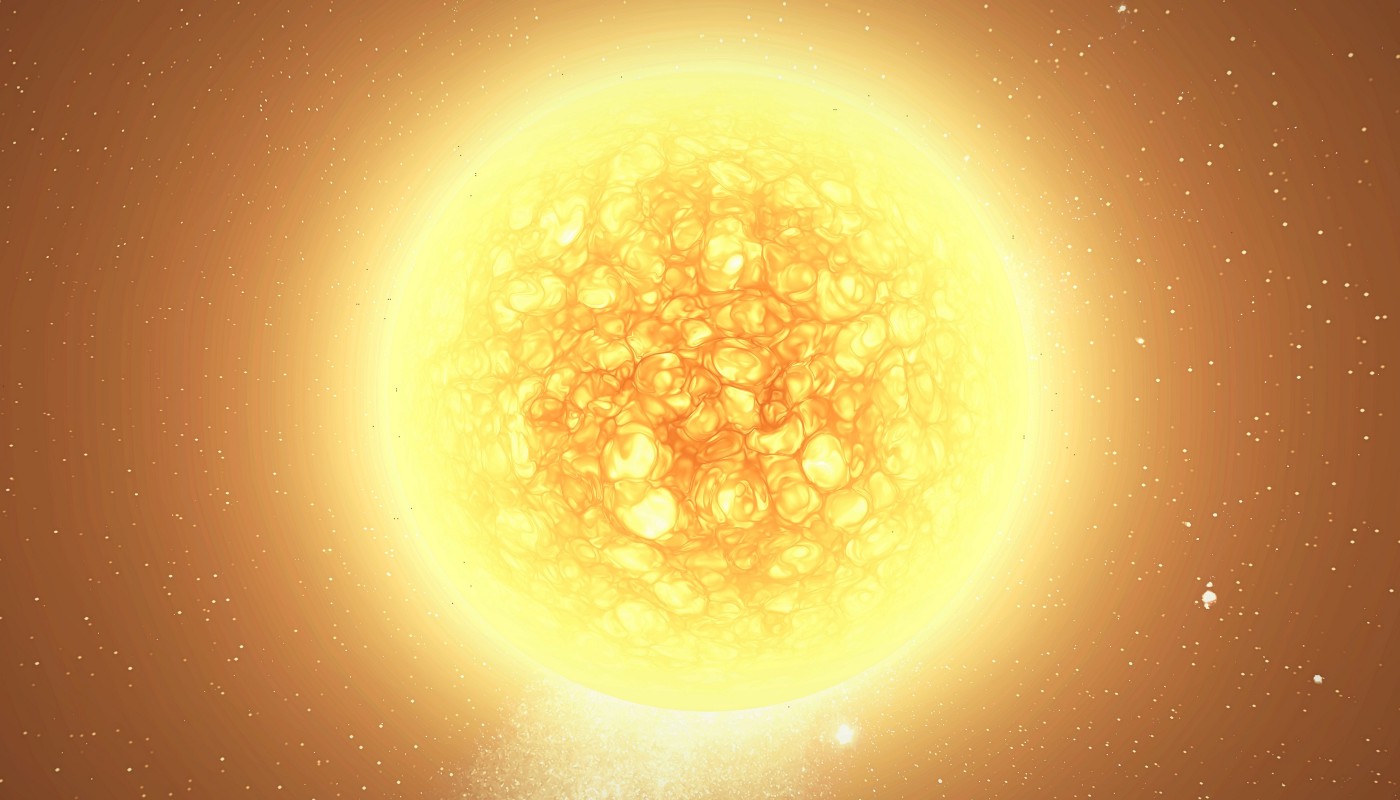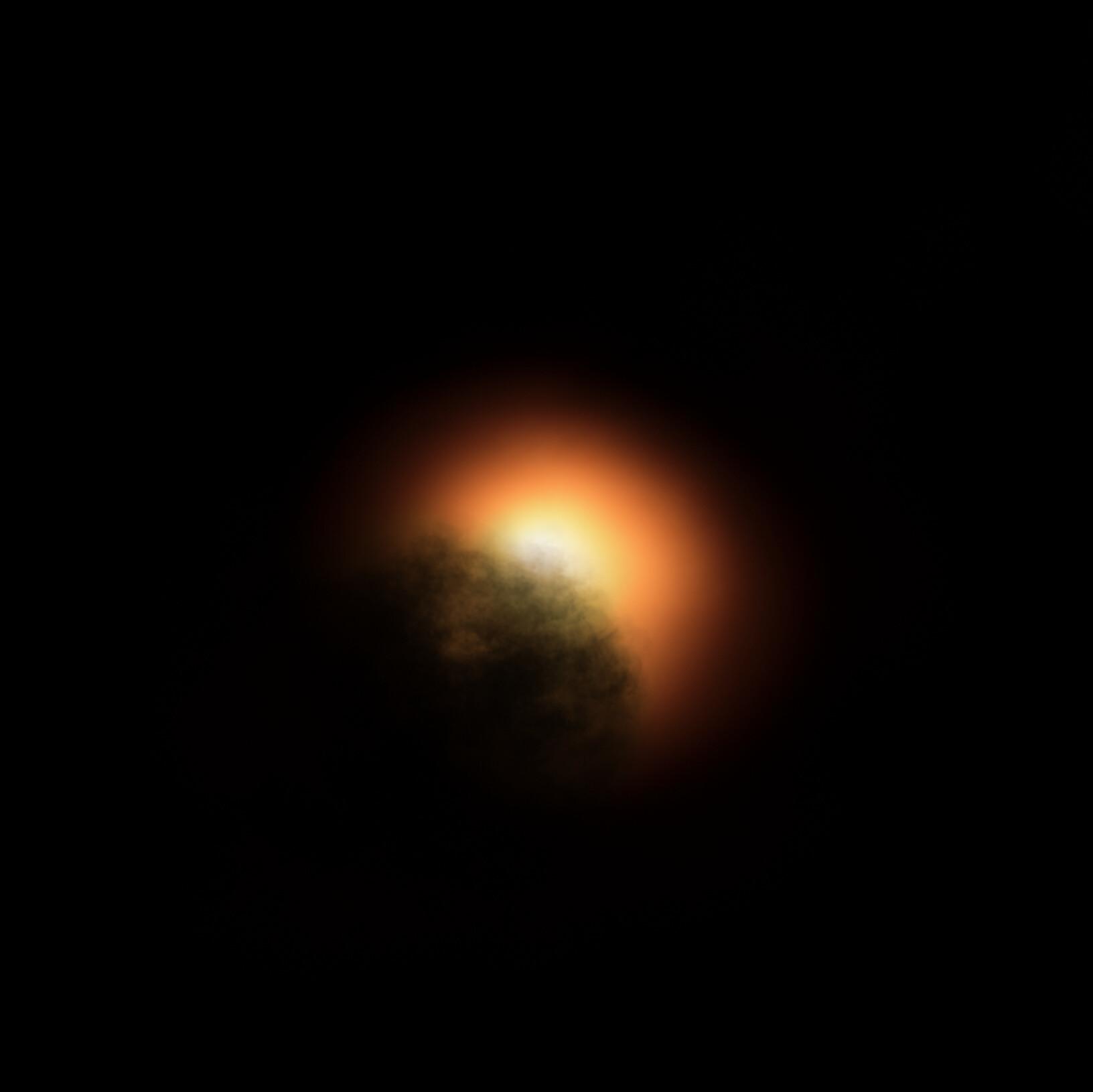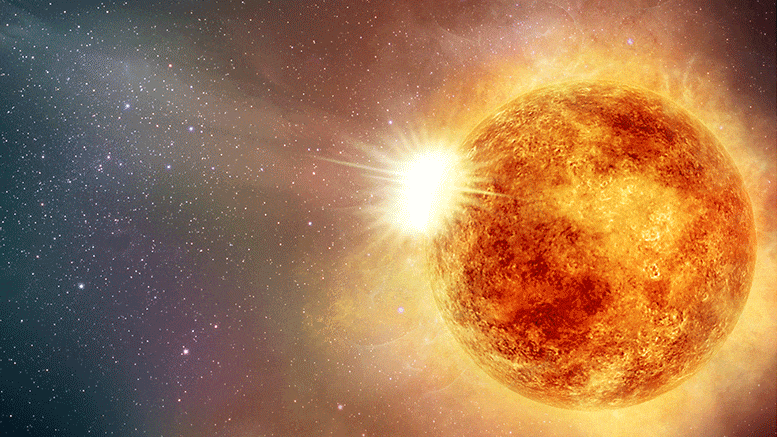The red supergiant Betelgeuse has recently attracted public attention with its strange behavior. A pulsating star in the famous constellation of Orion suddenly changed its luminosity, exciting scientists. Recently, it began to restore its brightness after a mysterious eclipse, and another study has already discovered a new surprise. The team of scientists stated that Betelgeuse changes not only its brightness, but also its color. According to research, only 2000 years ago the star had a yellow color instead of the current red. The new results may tell scientists how long it will take before Betelgeuse dies in a supernova outbreak.

“Betelgeuse always deceives you. You think you know everything about a star, and suddenly everything changes,” says astronomer Edward Guinan from Villanova University in Pennsylvania.
Unbalanced rhythm
At the end of 2019, Betelgeuse attracted the attention of astronomers when it suddenly darkened for several months. Astronomers called this event a Great Eclipse. Months of follow-up observations provided an explanation: a huge plasma ejection occurred from the surface of the star. This material cooled, condensed into dust and in a few months eclipsed the luminary for observers on Earth. The surface of the star has also cooled, contributing to the darkening.
But what happened later became no less unexpected. According to astrophysicist Andrea Dupree and her colleagues from the Harvard-Smithsonian Center for Astrophysics in Cambridge (Massachusetts) in an article on arXiv.org, the regular pulsation of the star’s brightness seems to be completely out of order.

In the course of evolution, the brightness of Betelgeuse changed with a characteristic rhythm. But lately it has become unstable. “For 200 years, it has had clear 400-day brightness fluctuations. But the rhythm got lost. Instead of the usual “drumming”, the vibrations now resemble an unbalanced washing machine,” explains Andrea Dupree.
According to Dupree, this is a sign that the star is trying to recover from a giant ejection of material in 2019. The scientist suggests that the dust ejected by Betelgeuse may become visible to some telescopes on Earth in 2023.
From Yellow to Red
The Great Eclipse is not the first time that scientists have recorded serious changes in the character of Betelgeuse. Two millennia ago, the star had a completely different color, according to astrophysicist Ralph Neuhauser and his colleagues in an article published in Monthly Notices of the Royal Astronomical Society.
The team analyzed ancient descriptions of more than 200 stars which colors should be visible to the naked eye over the past few thousand years, and found that most of the luminaries today have the same color that was seen in the past. But not Betelgeuse.

The ancient Roman astronomer Gaius Julius Hyginus, who lived from about 64 BC to 17 AD and wrote the Latin work De Astronomia, mentioned that the star in the right shoulder of Orion has a color similar to Saturn — yellow. Astrologer and archivist Sima Qian, who worked during the Chinese Han Dynasty around 100 BC, also described the star as yellow. And in general, observers from other ancient cultures saw Betelgeuse as yellow, not red, as it is now.
“I don’t expect to find a star that changes color in historical time,” says astrophysicist Ralph Neuhauser.
When will the explosion happen?
The color of a star is a sure sign of its evolutionary stage. When the luminaries burn hydrogen thermonuclear fuel in their cores, they inflate and emit gases into space. This expansion leads to a decrease in their surface temperature, and they change color from blue to red in a fairly short period — about 10 thousand years for a giant star like Betelgeuse, which is about 14 times more massive than the Sun.
This relatively recent color change indicates that Betelgeuse has just reached the end of its life and has become the red supergiant that we know it today. The result means that everyone waiting for Betelgeuse to flare up as a supernova will have to wait a very long time. If a star has become a supergiant in just the last few millennia, a big supernova explosion will have to wait at least a million years.
Follow us on Twitter to get the most interesting space news in time
https://twitter.com/ust_magazine

